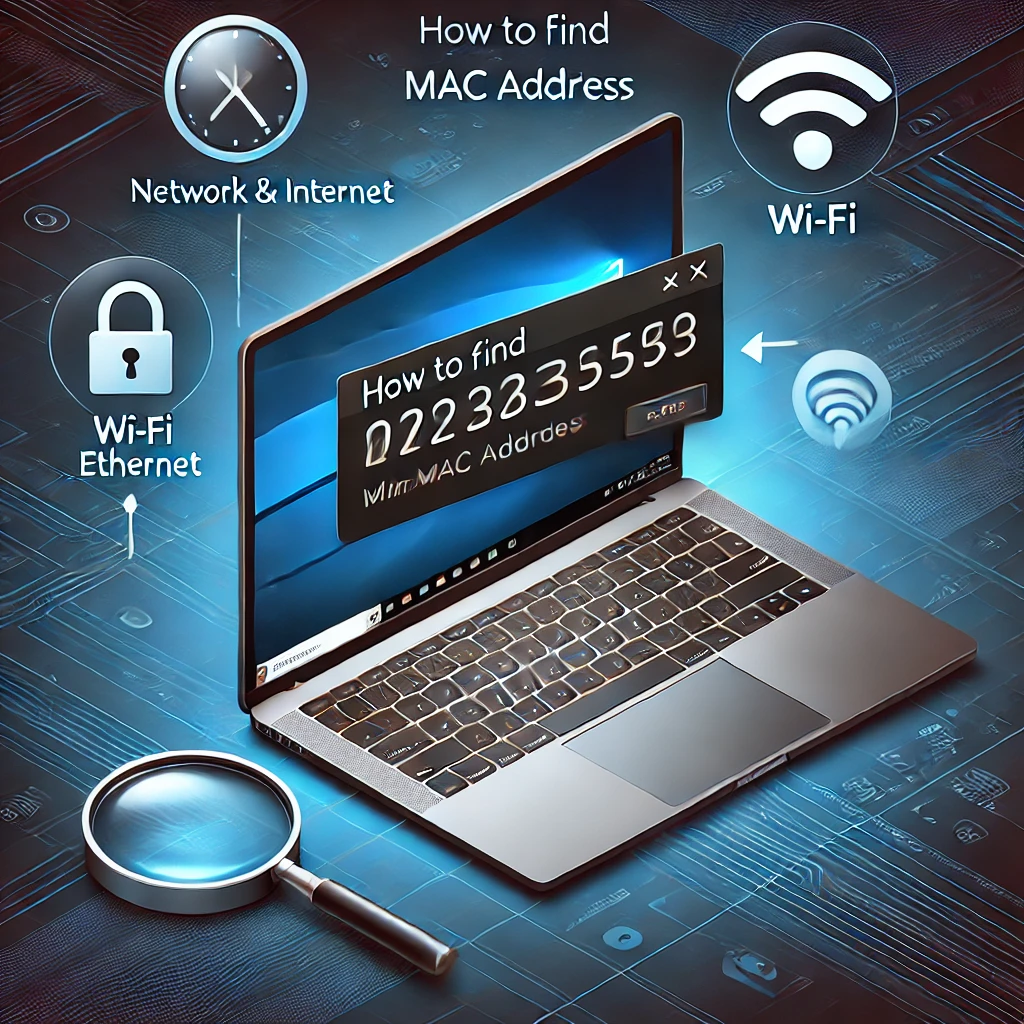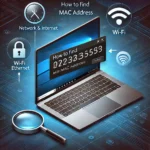When it comes to networking, one of the most essential pieces of information that defines your device is the Media Access Control (MAC) address. Every device that connects to a network—whether it’s your computer, smartphone, or tablet—comes with a unique MAC address that distinguishes it from others.
In this guide, I’ll walk you through how to find the MAC address on your Windows machine using several easy and efficient methods. Whether you are a novice or a seasoned tech professional, this step-by-step tutorial will ensure you can locate this important detail quickly and easily.
What is a MAC Address?
Before diving into the how-to, let’s briefly touch on what a MAC address is and why you might need it.
Understanding MAC Address
A MAC address is a unique identifier assigned to a network interface controller (NIC) for use as a network address in communications within a network. The MAC address consists of six pairs of hexadecimal digits (e.g., 00:1A:2B:3C:4D:5E) and serves as the physical address for your network hardware. Unlike an IP address, which can change based on your network environment, the MAC address is permanent and assigned by the device manufacturer.
Why Do You Need to Know Your MAC Address?
There are various reasons you might need to know your MAC address. It could be for troubleshooting network issues, allowing or denying access to your network using MAC filtering, or even registering your device with a secure network. In any case, the MAC address helps network administrators to keep track of connected devices.
How to Find Your MAC Address on Windows
Let’s explore several methods to retrieve the MAC address on a Windows device. You can choose whichever method you find most convenient, depending on your level of technical proficiency.
Method 1: Using Command Prompt (CMD)
For those who are comfortable working with the Command Prompt, this is one of the fastest ways to locate your MAC address.
Step-by-Step Instructions:
- Open Command Prompt:
- Press the Windows key and type “cmd” into the search bar.
- Right-click on Command Prompt and choose “Run as administrator.”
- Run the Command:
- In the Command Prompt window, type the following command and press Enter:
bash
ipconfig /all
- In the Command Prompt window, type the following command and press Enter:
- Locate the MAC Address:
- The command will display detailed information about your network connections.
- Look for the entry labeled “Physical Address” under the appropriate network adapter (e.g., Ethernet or Wi-Fi). This is your MAC address.
Method 2: Using the Network and Sharing Center
For users who prefer a graphical interface, the Network and Sharing Center within the Windows Control Panel offers another straightforward way to find your MAC address.
Step-by-Step Instructions:
- Open Network and Sharing Center:
- Press the Windows key and type “Control Panel” in the search bar.
- Click on Control Panel and navigate to Network and Internet > Network and Sharing Center.
- Access Adapter Settings:
- In the left-hand menu, click on Change adapter settings.
- View the MAC Address:
- Right-click on the active network connection (either Ethernet or Wi-Fi) and select Status.
- In the new window, click on Details.
- Look for the Physical Address entry—this is your MAC address.
Method 3: Using the Settings App (Windows 10/11)
If you’re using Windows 10 or 11, you can quickly access your MAC address through the Settings app. This method is ideal for users who prefer working with a modern UI.
Step-by-Step Instructions:
- Open Settings:
- Press the Windows key + I to open the Settings app.
- Go to Network & Internet:
- Navigate to Network & Internet > Status.
- Access Network Properties:
- Click on View hardware and connection properties.
- Your MAC address will be displayed under Physical address (MAC) for both wired and wireless connections.
Method 4: Using PowerShell
Power users might prefer using PowerShell to retrieve their MAC address, offering an alternative to Command Prompt with similar capabilities.
Step-by-Step Instructions:
- Open PowerShell:
- Press the Windows key and type “PowerShell.”
- Right-click on Windows PowerShell and select “Run as administrator.”
- Run the Get-NetAdapter Command:
- In the PowerShell window, type the following command and press Enter:
bash
Get-NetAdapter
- In the PowerShell window, type the following command and press Enter:
- Find Your MAC Address:
- The command will display details about your network adapters, including their MAC addresses under the column labeled “MACAddress.”
Method 5: Using Device Manager
Another method for those who want a more comprehensive view of their network devices is through the Device Manager. This method is slightly more involved but equally effective.
Step-by-Step Instructions:
- Open Device Manager:
- Press the Windows key + X and select Device Manager.
- Access Network Adapters:
- In the Device Manager window, expand the Network adapters section.
- View the MAC Address:
- Right-click on your active network adapter and select Properties.
- In the Properties window, switch to the Details tab and choose Network Address from the drop-down menu. Your MAC address will appear here.
Frequently Asked Questions
Can I Change My MAC Address?
Yes, it is possible to spoof or temporarily change your MAC address using third-party software or by configuring network adapter settings. However, for most users, this is unnecessary unless you’re troubleshooting network issues or testing a specific configuration.
Is My MAC Address Private Information?
While not inherently sensitive like a password, your MAC address can be used to track your device’s presence on a network. In public or unsecured networks, it’s generally best to avoid broadcasting unnecessary network information.
Conclusion
Knowing how to locate your MAC address on a Windows device is essential for various network-related tasks. Whether you’re troubleshooting connection issues or configuring network security, the MAC address serves as a critical identifier for your device. With the methods outlined above, you should now be able to find your MAC address quickly and efficiently, regardless of which version of Windows you’re using.
Each of these methods offers flexibility depending on your level of comfort with Windows, whether you prefer the command-line interface or a graphical approach.








Leave a Reply